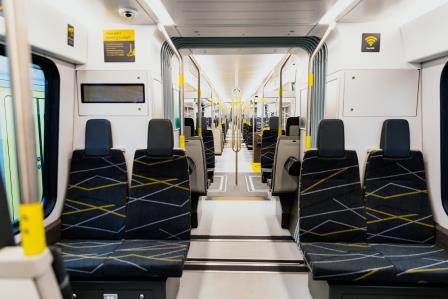
The Stadler lightweight rail vehicle is a modern articulated multi-car unit, which has been specifically designed for the needs and conditions of the Merseyrail network.
The vehicles are a fixed formation of four articulated cars, offering air conditioning, large vestibules, wide aisles and open gangways enabling easy movement throughout the unit. Each vehicle will be equipped with three motorised Jacobs bogies and two trailer end bogies.
Intelligent sliding steps that are able to detect all various platform positions by means of ultrasonic sensing equipment close the gap between entrance doorstep and the platform edge, minimising the gap to the platform and providing unassisted access at all entrances for all passengers, including those with buggies, luggage and bikes.

A first article inspection of the HVAC unit was undertaken by members of the Merseytravel engineering team with the support of the Merseyrail engineering team at Faiveley, the HVAC manufacturer’s factory in Leipzig Germany in February 2019.
The purpose of the first article inspection was to ensure that the HVAC unit complies with the technical specification prior to going into series manufacture.
The HVAC system consists of the heating panels along the skirting boards of the floor and the roof-mounted air conditioning units. Each carriage and each driver’s cab are equipped with their own HVAC system with an autonomous control system. The HVAC system of the passenger compartment provides a pleasant climate for passengers and personnel under all climate conditions. The outside air is taken in through a grating located in the side of the roof slopes. Outside air is mixed with circulating air and filtered in the air conditioning unit. The conditioned air is distributed into the passenger compartment through air ducts in the ceiling area. The exhaust air from the passenger compartment flows through apertures between the ceiling and sidewalls in the roof area, from where it leaves the vehicle through dynamic exhaust fans in the air conditioning unit.



